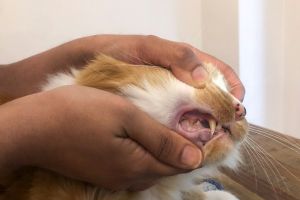Understanding basic first aid skills for your cat can empower you.! It will make all the difference in critical situations, whether your cat is choking, has an injury, or a seizure. Here are five essential first aid skills that every cat owner can master to protect their furry friend and feel more confident in managing emergencies.
1. Recognizing Normal Vital Signs
Understanding your cat's normal vital signs is the foundation of pet first aid. Knowing what is typical for your cat helps you identify when something is wrong, such as in cases of internal bleeding or choking. A healthy cat typically has a heart rate of 160 to 220 beats per minute, a respiratory rate of 20-30 breaths per minute, and a temperature between 37.5 and 39.2 degrees Celsius (99.5 and 102.5 degrees Fahrenheit).Recognizing these signs allows you to detect abnormalities early. For example, if your cat's breathing is laboured or their pulse is weak, these could indicate a severe problem, such as a cardiac emergency. This knowledge enables you to seek emergency vet care promptly, potentially saving your cat's life.
The Canadian Red Cross offers an online first aid course for dogs and cats. It teaches you how to recognize vital signs, helping you confidently check your cat's health.
2. Managing Choking and Breathing Problems
Choking is one of the most common pet emergencies, especially for curious cats who might chew on small objects like toys or cat food. If your cat begins to choke, it's crucial to act quickly. Look for signs like anxiousness, acting frantic, lack of breathing, bluish or white gums, loud or struggling breathing, and pawing at their mouth.
If your cat is choking, check their mouth and carefully remove anything blocking their airway. If the object is lodged deeper, you should perform rapid abdominal thrusts for pets. This could be a life-threatening situation. Seek emergency vet care promptly.
Before an emergency happens, take a cat first aid course. This will help you learn important skills. Being prepared can save your cat's life.
3. Providing Wound Care
Injuries, such as cuts or abrasions, are common for adventurous cats. Knowing how to treat an open wound on a cat is vital to prevent infection and further complications. First, put some gauze on the bleeding site and press down firmly. This is the safest way to stop the bleeding until you can get to a vet.If you notice any signs of an infected wound, such as redness, swelling, or pus, it's important to seek veterinary care immediately. Proper cat wound care not only prevents infection but also speeds up healing, helping your cat recover faster.
The pet first aid course provides step-by-step guidance on how to clean wounds on a cat and apply a bandage. It also includes information on managing other types of injuries, ensuring you feel more confident in supporting your cat during emergencies.

4. Handling Seizures
Seizures in cats can be frightening, but staying calm and knowing what to do can make a significant difference. If your cat experiences a seizure, make sure to move any objects that could cause injury, such as furniture or sharp items. Do not attempt to hold or restrain your cat during a seizure, as this could cause additional stress or injury.After the seizure ends, keep your cat warm and comfortable, monitoring them closely for any further symptoms. Wrap them in a blanket to keep them warm and seek emergency care immediately.
5. Preparing a Pet First Aid Kit
Every cat owner should have a pet first aid kit readily available. Remember to have a pet first aid kit handy with essentials like gauze, antiseptic wipes, bandages, tweezers, and a digital thermometer. Add your cat's medications to the kit. Keep the contact information for the vet and the animal poison control centre in the kit. Get a pet first aid kit in our eShop.The cat first aid kit will help you respond quickly to emergencies and care for your cat until professional help can be reached. You can also take a first aid course for cats, with recommendations on what to include in your kit.
Prepare to Ensure Your Cat's Well-Being
The Canadian Red Cross's First Aid for Dogs and Cats online course will teach you the skills needed to recognize when your cat needs help. You will learn what to do in emergencies like choking, wounds, seizures, and more.By learning these skills, you will feel more confident about helping your cat stay safe and healthy. Remember, it's still important to take your cat to the vet for regular check-ups. You can sign up for the course online and be more prepared to take care of your cat no matter what happens.

